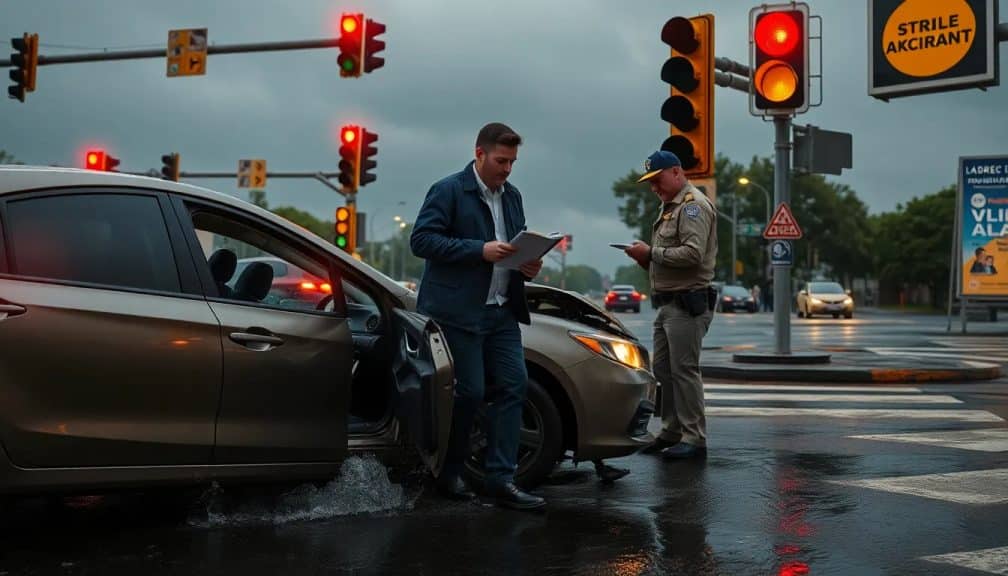Weather conditions play a crucial role in determining the liability in car accidents. Factors like rain, snow, and fog can create hazardous driving environments, leading to increased accident rates. Understanding how these conditions influence accident claims is essential for drivers and insurance companies alike.
In this article, we will explore the legal implications of weather-related accidents and how drivers can navigate liability issues effectively.
How do weather conditions impact car accident claims?
The impact of adverse weather on driving safety cannot be overstated. Rain and snow significantly increase the likelihood of accidents, leading to complex claims situations. When car accidents occur in such conditions, insurance companies closely examine the circumstances surrounding the incident.
Drivers involved in accidents during inclement weather may face challenging claims processes. This is particularly true if they are found to have acted recklessly or failed to take necessary precautions, such as reducing speed or increasing following distance. Various factors are investigated, including road conditions and visibility.
Insurance providers also consider the driver's duty of care when determining liability. A driver’s actions in relation to the weather can be critical in establishing fault. Therefore, understanding how weather conditions affect accident liability is paramount for both drivers and insurers.
What are common weather conditions that cause car accidents?
- Rain
- Snow
- Fog
- Icy roads
- High winds
Each of these conditions poses unique hazards. For instance, rain can create slippery roads, increasing stopping distances and the risk of hydroplaning. Snow and ice can lead to loss of traction, making it challenging for drivers to maintain control over their vehicles. Fog reduces visibility, which can result in severe accidents if drivers do not adjust their speed accordingly.
Understanding these weather-related factors is essential for drivers. They must adapt their driving behavior to ensure safety and mitigate potential liability in the event of an accident.
How does weather affect liability in auto accident cases?
When assessing liability in weather-related accidents, several legal principles come into play. Courts often examine the concept of comparative negligence, which determines the degree of fault of each party involved in the accident.
For example, if a driver was speeding during a rainstorm, they may be deemed partially liable for any resulting accident. In this case, the determination of liability becomes multifaceted, as the weather is considered alongside the driver's actions.
Additionally, courts may also reference official weather reports and eyewitness accounts to evaluate the situation. Establishing liability in adverse weather conditions requires a comprehensive analysis of all contributing factors.
What legal principles govern weather-related accidents?
Legal principles surrounding weather-related accidents include duty of care, negligence, and liability standards. Duty of care refers to the legal obligation of drivers to operate their vehicles safely and responsibly, especially in adverse conditions.
Negligence occurs when a driver fails to exercise reasonable care, leading to an accident. If a driver ignores poor weather conditions and drives recklessly, they may be found negligent. Liability standards differ by state, and understanding these variations is crucial for individuals involved in accidents.
Moreover, courts frequently consider the context of the weather and how it affected the accident's specific circumstances. This nuanced approach ensures that liability is assigned fairly based on all factors involved.
How can drivers prove liability in weather-related incidents?
Proving liability in weather-related accidents can be challenging, but there are several strategies drivers can employ. First, it is imperative to document the weather conditions immediately following the accident. Taking photos of the scene, including road conditions and visibility, can provide crucial evidence for a claim.
Additionally, obtaining witness statements can further support a driver’s account of the incident. Eyewitnesses can provide valuable insights into the conditions at the time of the accident and any reckless behavior exhibited by other drivers.
Finally, police reports often include detailed information about the weather conditions and circumstances surrounding the accident. This documentation can be instrumental in establishing fault and supporting a claim.
What safety precautions should drivers take in adverse weather?
- Reduce speed and increase following distance.
- Use headlights, especially in fog and heavy rain.
- Avoid sudden movements or sharp turns.
- Stay informed about weather conditions and forecasts.
- Avoid driving if conditions are excessively dangerous.
Taking these precautions can significantly enhance driving safety and reduce the likelihood of accidents. Being proactive and prepared helps drivers navigate inclement weather while minimizing their risk of liability.
Insurance companies often look favorably on drivers who demonstrate responsible behavior in adverse conditions, potentially leading to more favorable claims outcomes.
Questions related to how weather conditions affect accident liability
Do weather-related accidents affect insurance?
Yes, weather-related accidents can significantly impact insurance claims. Insurance companies evaluate the circumstances of each accident, including weather conditions, to determine fault and coverage. Adverse weather can sometimes lead to lower liability assessments for drivers, especially if they can demonstrate that they took necessary precautions.
However, if the driver is found to have been reckless despite weather conditions, this can lead to increased premiums or denial of claims. It is crucial for drivers to understand their policy details and how weather conditions may influence their claims.
How does weather contribute to accidents?
Weather contributes to accidents primarily by creating hazardous road conditions. For instance, rain and snow can reduce traction, while fog can impair visibility. These factors increase the likelihood of losing control of the vehicle, leading to collisions.
Additionally, poor weather often causes drivers to make hasty or reckless decisions, such as speeding in rain or failing to increase following distance. Collectively, these elements significantly elevate the risk of accidents, highlighting the importance of safe driving practices in adverse weather.
What are 90% of accidents caused by?
While it is often quoted that a significant percentage of accidents are due to human error, weather plays a vital role in these incidents. In fact, it is estimated that around 21% of crashes are weather-related, indicating that poor visibility and slippery conditions are major contributors to these statistics.
Factors such as distracted driving, speeding, and driving under the influence also account for many accidents. However, adverse weather conditions can exacerbate these issues, leading to a higher likelihood of accidents overall.
How is liability determined in an accident?
Liability in an accident is determined by assessing the actions of all parties involved. Factors taken into account include adherence to traffic laws, the driver’s duty of care, and the weather conditions at the time of the incident. Comparative negligence often plays a role, as the degree of fault may be distributed among multiple parties.
Additionally, evidence such as police reports, eyewitness accounts, and documentation of weather conditions are crucial in establishing liability. Understanding these factors helps drivers navigate complex legal landscapes following an accident.

